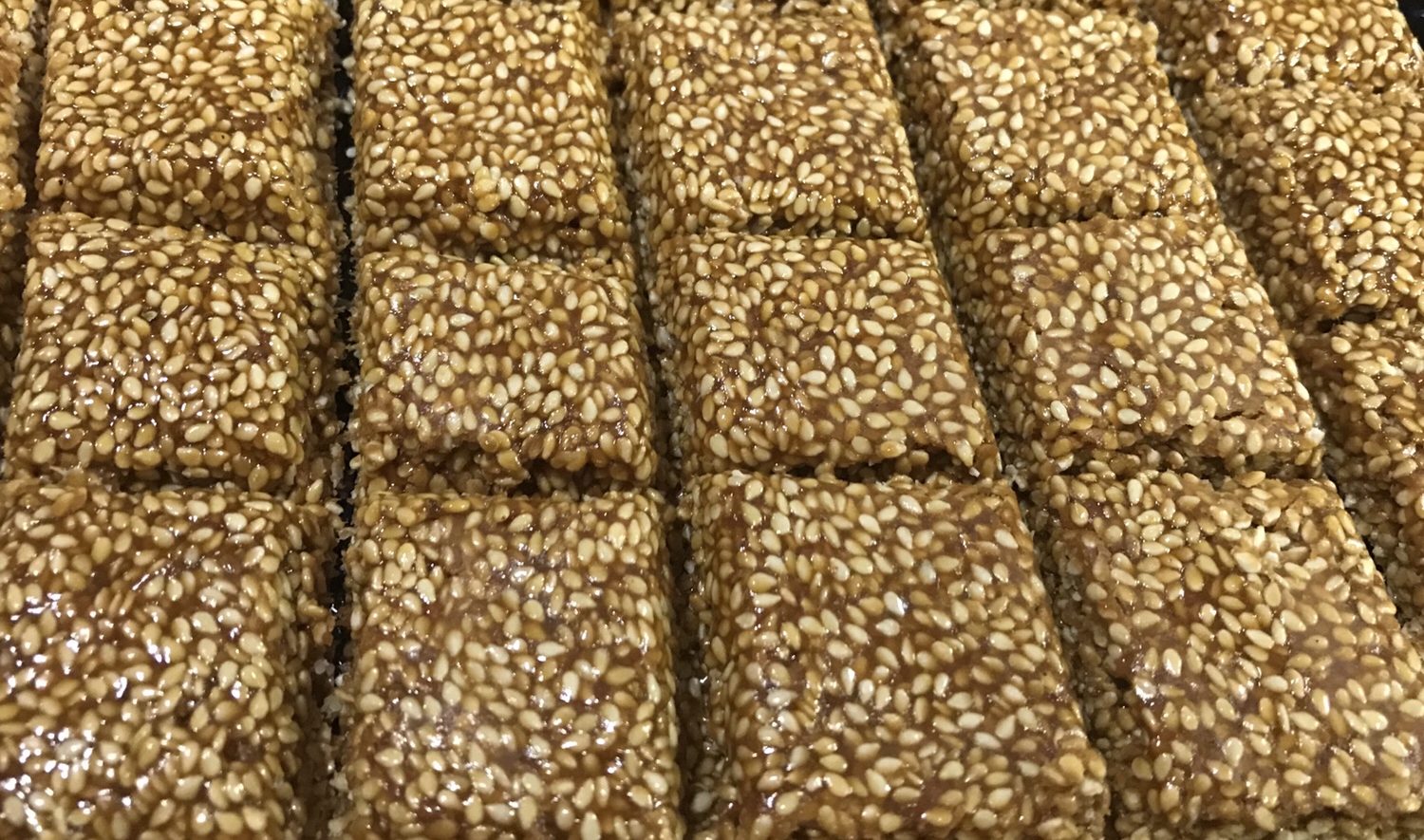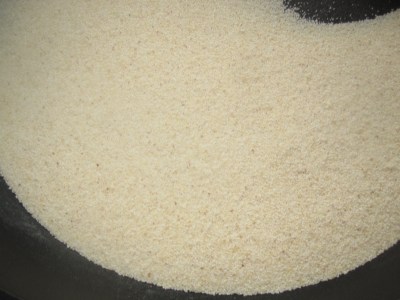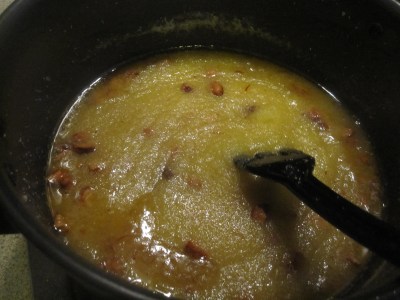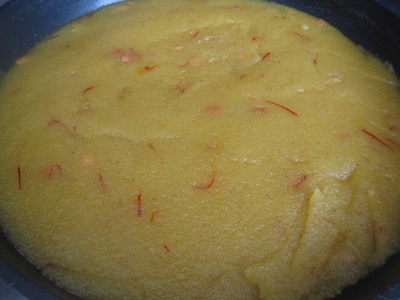kesari
When we start anything new, we always start with a sweet. Now, when ‘dosaikal’ is stepping forward into another new year, let us enter with a sweet. Birthday of any member of the family or Marriage Anniversary is celebrated with the person/couple’s favourite payasam (of course cakes for youngsters in the evening); Entry into a new house – ‘pudhu manai pugu vizha’ in tamil or the house-warming ceremony is started in the new kitchen by boiling milk with sugar/jaggery flavoured with cardamom; Festivals begin with specific sweets of the occasion early in the morning. So, where does this Ravai/Rava Kesari come in ….?
It is a simple and quick sweet dish which accommodates itself on all occasions.
In marriage ceremonies, the morning breakfast served for guests in the ‘Thirumana Mandapam’ – Marriage Hall, would start with kesari;
In some families, during the ‘bride seeing ceremony’ – when the family of the bridegroom visits many of those ‘expected eligible brides’ to choose a perfect life partner for their son – sojji (kesari) and bhajji (vegetable fritters) are served. Kesari is also known as ‘sojji’ – (must have come from the hindi word for ravai/semolina – sooji);
Sudden guests? – there is always the simple Kesari – quick and pleasing;
To start a breakfast feast menu, to go with a snack and filter kaapi (https://dosaikal.com/2011/08/18/the-morning-cup-of-coffee) for evenings or as and when to satisfy the urge of the extra sweet tooth – the versatile ravai/rava kesari is certainly a show stealer – and one of my favourite sweets.
The name Kesari
Kesar denotes Saffron.
The name saffron comes from Arabic, where the spice is known as za’fran that name derives from a Semitic root signifying “be yellow” or “become yellow”. Almost all European and several non-European languages have loaned that name.
Several superficially similar Indic names of saffron (Sanskrit kesaravara, Hindi kesa, Urdu kisar) are, however, not related but derive from Sanskrit kesara “hair”, which refers to the thin, almost hairlike saffron threads. (http://kesarwani.net/Pages/Etymology.aspx)
In Tamil, saffron/kesar is called kungumapoo – combination of kungumam and poo. Kungumam/Kumkum is the red coloured mark applied on the forehead, by women in India (mostly Hindus) and religiously by both men and women; Poo means flower. So, Kungumapoo means the vermilion coloured flower.
Kesar – kungumapoo – saffron is grown in Kashmir, a state in northern India. In the south of India, the world’s most expensive spice is used in rarity – I think mostly expecting mothers add to their glass of milk.
In North India, Semolina Pudding is called Sooji ka Halwa – literally translated as semolina halwa/pudding. Sooji ka Halwa does not have the touch of saffron – it has the subtle colour of roasted semolina in clarified butter. But, the south indian version of semolina pudding has the colour of saffron and hence it must have got its name KESARI. Nowadays, generally, orange food colour is added to Kesari for the colour. In many households, kungumapoo/saffron is added to give Kesari the original saffrony colour.
Now, to the making of Kesari!
Kesari
Ingredients (serves 6)
- Ravai/Rava/Semolina (sooji) – 1 cup
- sarkkarai/sugar – 1 1/2 cups (
- thanneer/water – 4 cups
- elappodi/cardamom powder – 1/2 tsp
- nei/clarified butter – 1/2 cup
- mundhiri/cashewnuts – 2 tbsp
- kungumapoo/kesar/saffron – a few strands
Method of Preparation
1. In a broad pan, roast ravai/semolina till it gives out a roasted aroma and starts turning golden brown (should not be completely golden brown)
2. Spread in a plate and keep aside
3. In the same pan, boil 4 cups of water, sugar, saffron strings and cardamom powder
4. Close the pan with lid to bring to a boil quickly
5. Simmer stove at this stage
6. Slowly add roasted ravai- be careful with constant stirring as lumps form very easily (Add ravai with one hand and keep stirring with the other)
7. Keep stirring till ravai/semolina absorbs all water and comes to a thick consistency
8. Do not forget to stir continuously till the whole mixture thickens
9. As soon as the mixture is thickened, immediately in another stove, fry the cashew nuts in nei/clarified butter (let the stove be in sim position only)
10. Pour this into the nearly done kesari and mix well
11. Close the lid and cook for nearly five minutes
12. After the addition of nei/clarified butter, the texture of kesari reaches the much awaited ‘melt in the mouth consistency’
13. Serve hot for a heavenly taste
14. Alternatively, cool kesari and cut to required pieces and garnish with almonds.
or serve as you wish!
Note:
- Though Ravai Kesari is a very easy sweet – lumps form very easily when ravai/semolina is getting cooked. To avoid this, stirring continuously is the only remedy
- While roasting, be cautious not to let ravai brown too much
- Generally, 3 cups water is taken for 1 cup ravai; I find this level insufficient for a super soft kesari. So, I use 4 cups of water, which lets ravai/sooji/semolina cook well and would not let semolina thicken before getting cooked
- Though quantity of nei/ghee/clarified butter can be reduced as preference, the above mentioned ‘melt in the mouth’ consistency would be compromised…so, the choice is yours
- If the last method of frying cashew nuts in nei seems complicated with kesari in one stove, one may roast cashewnuts separately and then heat the nei separately to add to kesari
- Always pour hot nei/ghee/clarified butter into cooked kesari to bring out the best consistency.












How to tell we have pure saffron? How to test it?
Can you do a post on how to properly make saffron milk and why for females its good?
There are different posts online and they all confuse me. Some soak it in water or in milk (either hot, warm or cold water I have no idea and why soak in water and or milk I have no idea. Some don’t soak it at all….) Some say saffron should taste sweet others say it shouldn’t! So much contradiction.
Thanks for stopping by. Surely will try to do a post in the near future.